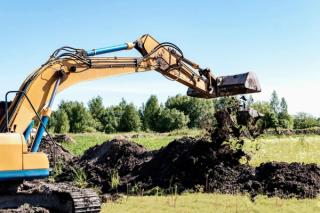
Cultural heritage: Indigenous and cultural heritage values driving sustainable development
by Flavia Kiperman
View post

The Department for Environment Food and Rural Affairs (DEFRA) estimate that some 200 million tonnes of waste is produced in the UK each year. However, there is currently no single comprehensive method by which the classification, transport and disposal of this waste is tracked and audited.
When SLR’s Land Quality & Remediation (LQR) team is tasked with preparing a Verification Report to demonstrate the successful implementation of a remediation strategy it is necessary to provide the regulatory authorities with appropriate Duty of Care information to show that all wastes have been appropriately handled and disposed. The quality of information supplied by the sites can be highly variable and in the worst cases can comprise large, incoherent spreadsheets developed internally, or even boxes of paper waste transfer notes marked simply as ‘muck away’.
As large amounts of data are inappropriately collated, the UK is proposing a mandatory digital waste tracking system to be implemented by 2023/2024. The aims of this document, as discussed by the DEFRA policy paper published 25 April 2022, are as follows:
There have already been efforts within the industry to move to a more traceable electronic system. For example, the HazWasteOnlineTM model (which SLR routinely uses to classify wastes in accordance with Guidance on the classification and assessment of waste (WM3 v1.2.GB)) now attributes QR codes that the classification output reports so that these can be specifically linked to a waste consignment. This transparent approach allows all parties to analyse the data used to undertake the classification and ascertain whether the assessment conforms with current guidance and best practice.
The HazWasteOnlineTM model also references the training record of the operative who assessed the data so it can be demonstrated that this has been undertaken by a competent user. SLR currently has a team of fully trained professionals who are capable of assessing HazWasteOnlineTM data and are able to offer this as a service.
The consequences of inaccurate classification and disposal are even more pertinent since HMRC and the Environment Agency (EA) have developed a strong partnership to clamp down on materials disposed to landfill that do not, strictly speaking, comply with the Qualifying Materials Order (QMO) and have extended Landfill Tax (LfT) to illegal deposits of waste in some cases.
Although illegal disposal of waste at unauthorised sites is an environmental crime, until recently these activities were not subject to landfill tax. Less scrupulous operators have been using this as a method by which they can undercut legitimate operators, thus increasing profits at the expense of the environment. The Environmental Services Association (ESA) estimates that waste crime costs the English economy more than £600m a year, with up to £200m of tax being avoided. For this reason HMRC are understood to have spent approximately £2.4m on additional staff to enforce and monitor compliance.
Since 1st April 2018, any person or business who makes a disposal at an unauthorised waste site, or knowingly causes or permits the disposal, may be liable for the shortfall in landfill tax. Those involved in the illegal disposal would be penalised for environmental offences and forced to make punitive costs for defrauding the revenue and harming the environment. In addition, they could also face a fine of up to 100% of the tax or, criminal prosecution. In our experience, this has resulted in disposal and recycling facilities implementing more robust acceptance procedures that clients often struggle to comply with due to their lack of understanding of the classification process as defined by WM3.
SLR has been able to provide technical advice to clients on how to adhere to the current guidance and accurately sample, analyse, assess and classify their wastes. For our LQR team, this most commonly involves the investigation of potentially contaminated sites and the development of strategies that enable different streams of waste soil to be delineated and segregated prior to excavation removal from site. This approach not only ensures regulatory compliance, but also significantly reduces the risk of soils being unnecessarily disposed off-site as hazardous waste at significant cost.
Although soil analysis is most common, SLR has successfully used similar approaches to assess a range of other waste streams including trommel fines, incinerator bottom ash (IBA) and even wastes generated by the processing of disused carpet material that was ultimately reused to produce a surfacing material for equestrian centres.
The above controls have also impacted how clients approach the reuse of waste materials during a development. There are several mechanisms by which materials can achieve ‘end of waste’, including Environmental Permitting, adherence to the WRAP protocol, or via the use of the Definition of Waste: Code of Practice (DoWCoP) issued by CL:AIRE in consultation with the EA. It is now even more essential that clients are provided with appropriate advice so that they can demonstrate that site operations do not constitute an illegal deposition of waste that could be considered as both an environmental crime and a method of tax avoidance.

by Flavia Kiperman

by Jasper Schrijvers , Matthew Hoare

by Clodagh Connolly, Nicola Inge, Andres Schottlaender